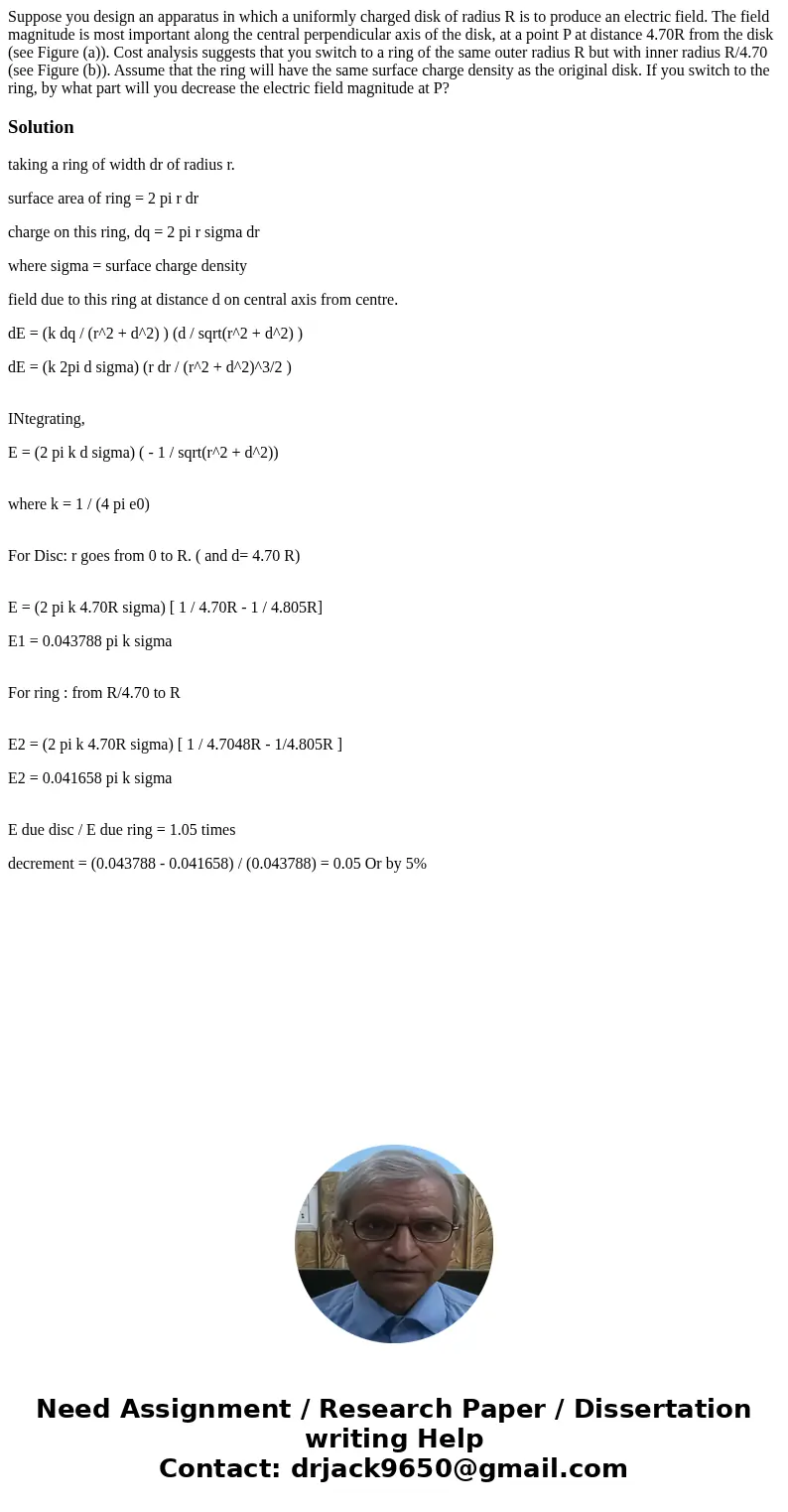Suppose you design an apparatus in which a uniformly charged
Suppose you design an apparatus in which a uniformly charged disk of radius R is to produce an electric field. The field magnitude is most important along the central perpendicular axis of the disk, at a point P at distance 4.70R from the disk (see Figure (a)). Cost analysis suggests that you switch to a ring of the same outer radius R but with inner radius R/4.70 (see Figure (b)). Assume that the ring will have the same surface charge density as the original disk. If you switch to the ring, by what part will you decrease the electric field magnitude at P?
Solution
taking a ring of width dr of radius r.
surface area of ring = 2 pi r dr
charge on this ring, dq = 2 pi r sigma dr
where sigma = surface charge density
field due to this ring at distance d on central axis from centre.
dE = (k dq / (r^2 + d^2) ) (d / sqrt(r^2 + d^2) )
dE = (k 2pi d sigma) (r dr / (r^2 + d^2)^3/2 )
INtegrating,
E = (2 pi k d sigma) ( - 1 / sqrt(r^2 + d^2))
where k = 1 / (4 pi e0)
For Disc: r goes from 0 to R. ( and d= 4.70 R)
E = (2 pi k 4.70R sigma) [ 1 / 4.70R - 1 / 4.805R]
E1 = 0.043788 pi k sigma
For ring : from R/4.70 to R
E2 = (2 pi k 4.70R sigma) [ 1 / 4.7048R - 1/4.805R ]
E2 = 0.041658 pi k sigma
E due disc / E due ring = 1.05 times
decrement = (0.043788 - 0.041658) / (0.043788) = 0.05 Or by 5%

 Homework Sourse
Homework Sourse